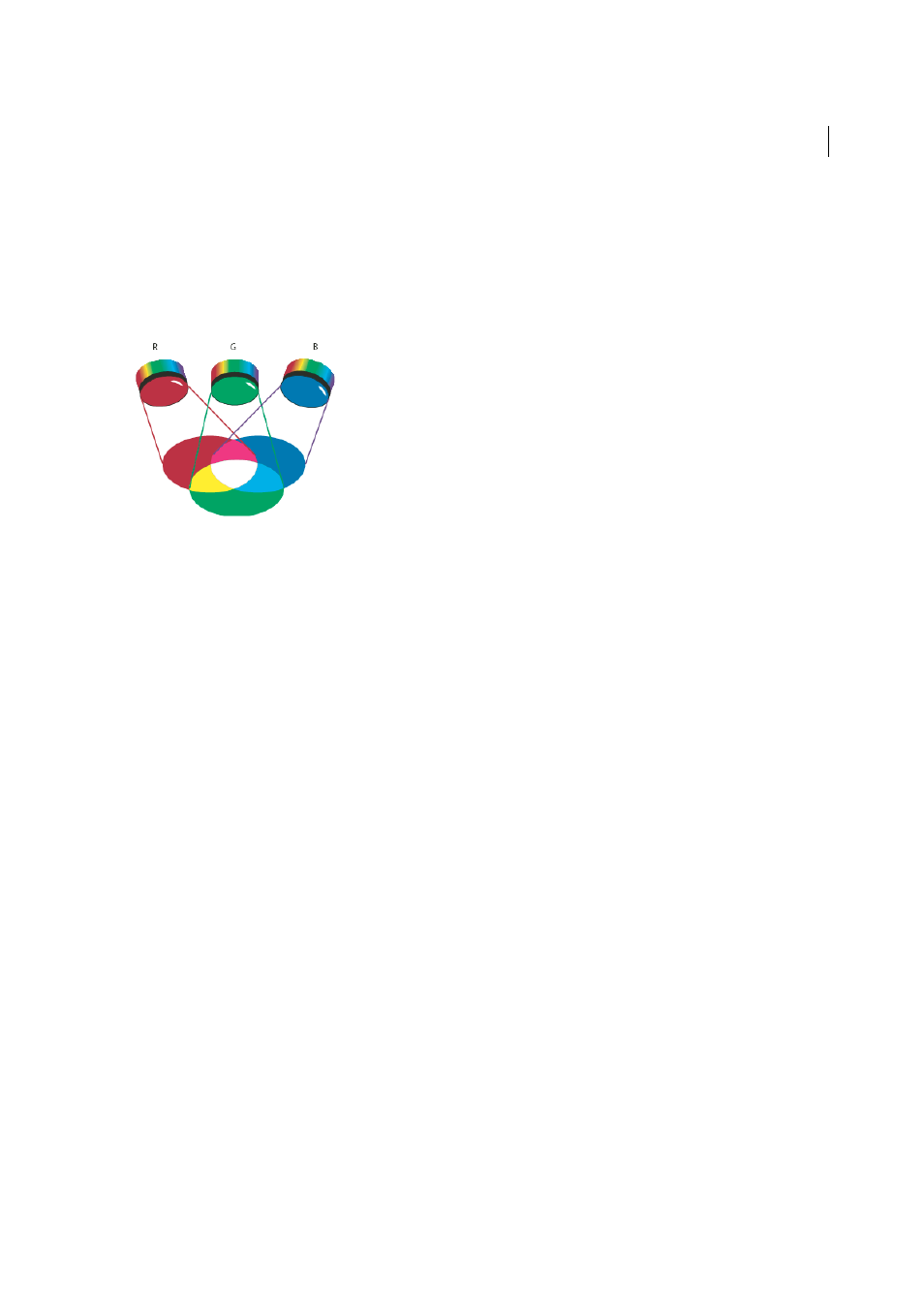Cmyk – Adobe Illustrator CC 2015 User Manual
Page 148

143
Color
Last updated 6/5/2015
RGB
A large percentage of the visible spectrum can be represented by mixing red, green, and blue (RGB) colored light in
various proportions and intensities. Where the colors overlap, they create cyan, magenta, and yellow.
RGB colors are called additive colors because you create white by adding R, G, and B together—that is, all light is
reflected back to the eye. Additive colors are used for lighting, television, and computer monitors. Your monitor, for
example, creates color by emitting light through red, green, and blue phosphors.
A Red B Green C Blue
You can work with color values using the RGB color mode, which is based on the RGB color model. In RGB mode, each
of the RGB components can use a value ranging from 0 (black) to 255 (white). For example, a bright red color might
have an R value of 246, a G value of 20, and a B value of 50. When the values of all three components are equal, the result
is a shade of gray. When the value of all components is 255, the result is pure white; when all components have values
of 0, the result is pure black.
Illustrator also includes a modified RGB color mode called Web Safe RGB, which includes only those RGB colors that
are appropriate for use on the web.
More Help topics
CMYK
Whereas the RGB model depends on a light source to create color, the CMYK model is based on the light-absorbing
quality of ink printed on paper. As white light strikes translucent inks, a portion of the spectrum is absorbed. Color that
is not absorbed is reflected back to your eye.
Combining pure cyan (C), magenta (M), and yellow (Y) pigments would result in black by absorbing, or subtracting,
all colors. For this reason they are called subtractive colors. Black (K) ink is added for better shadow density. (The letter
K came into use because black is the “key” color for registering other colors, and because the letter B also stands for
blue.) Combining these inks to reproduce color is called four-color process printing.